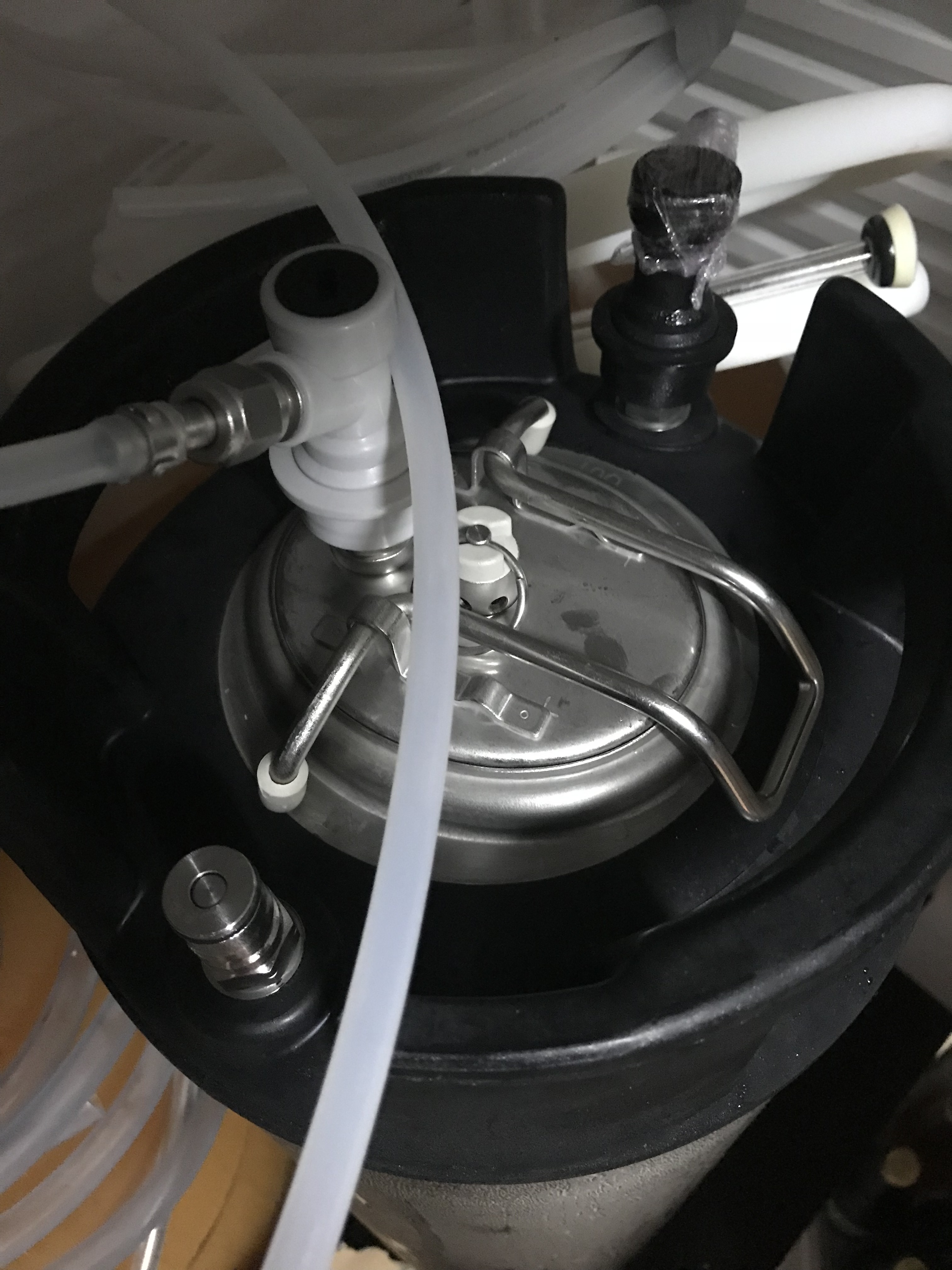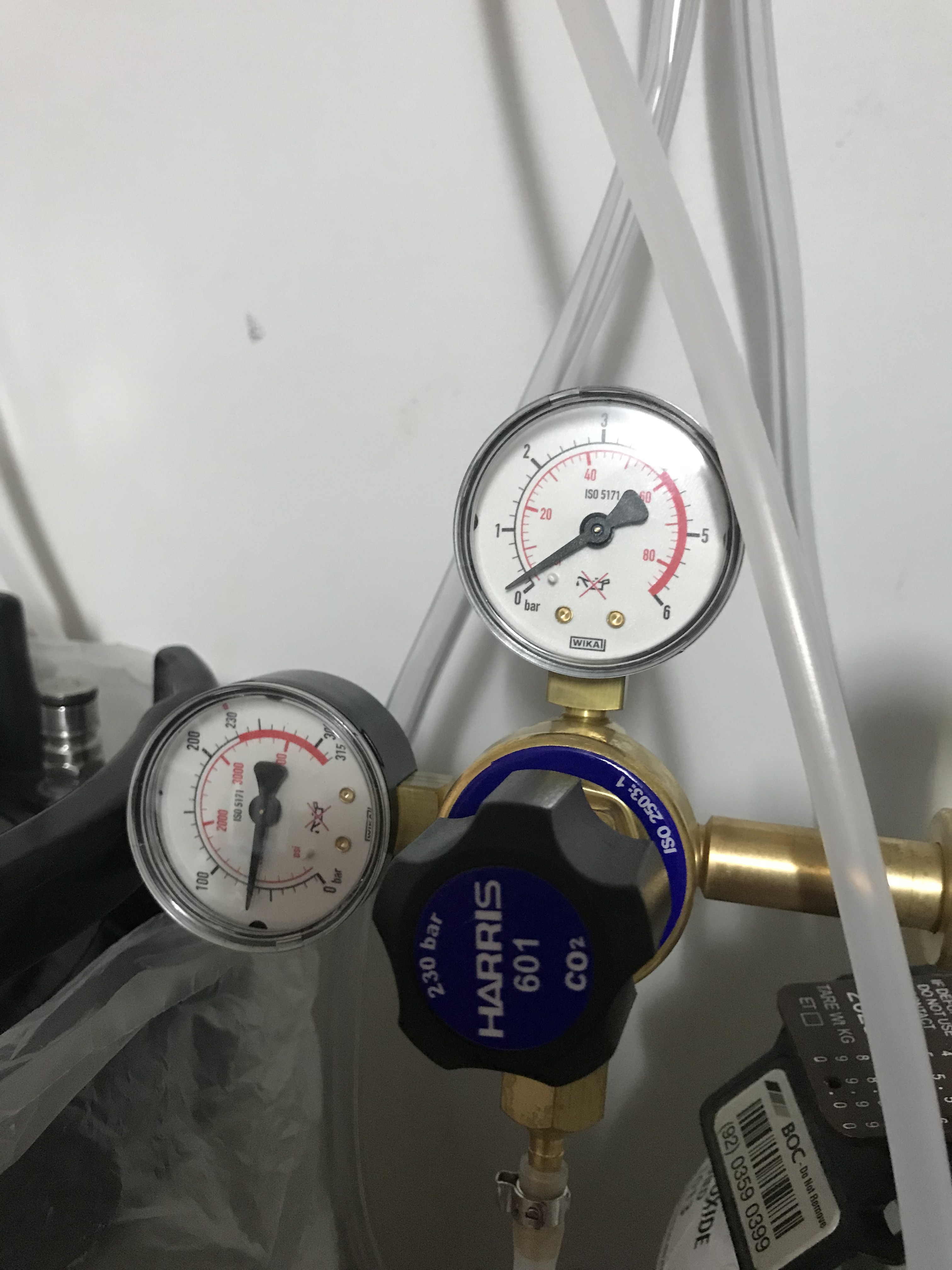Don't Let The Dead Have All The Fun! 
Didn't see this the first time 'round, but I get what he's doing: he has the stone mounted on the gas side dip tube, pretty close to the lid end of the keg. He then connects a tee to the Out post - presumably with a full-length dip tube below - with a gauge on one side and a bleeder valve on the other.
Flipping the keg puts the stone near the bottom of the beer column. He then fills @30psi until the flow stops, then he dials his bleeder valve to provide a differential of ~5 psi. The end of the Out dip tube is sitting in what's now the "head space", he's basically bubbling CO2 through the beer column, using the bleeder to keep things moving and not hit equilibrium.
Note that this is indeed a bleeder valve: the bled-off CO2 is being shot into the atmosphere.
Such is the price of impatience...
Cheers!
Didn't see this the first time 'round, but I get what he's doing: he has the stone mounted on the gas side dip tube, pretty close to the lid end of the keg. He then connects a tee to the Out post - presumably with a full-length dip tube below - with a gauge on one side and a bleeder valve on the other.
Flipping the keg puts the stone near the bottom of the beer column. He then fills @30psi until the flow stops, then he dials his bleeder valve to provide a differential of ~5 psi. The end of the Out dip tube is sitting in what's now the "head space", he's basically bubbling CO2 through the beer column, using the bleeder to keep things moving and not hit equilibrium.
Note that this is indeed a bleeder valve: the bled-off CO2 is being shot into the atmosphere.
Such is the price of impatience...
Cheers!












































![Craft A Brew - Safale S-04 Dry Yeast - Fermentis - English Ale Dry Yeast - For English and American Ales and Hard Apple Ciders - Ingredients for Home Brewing - Beer Making Supplies - [1 Pack]](https://m.media-amazon.com/images/I/41fVGNh6JfL._SL500_.jpg)














